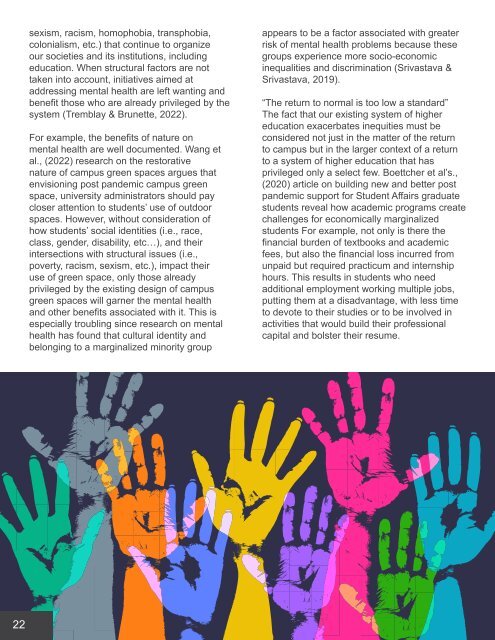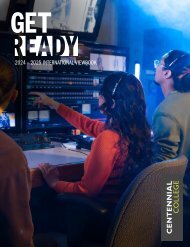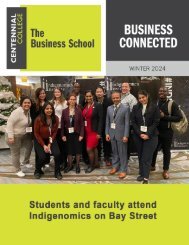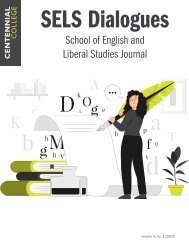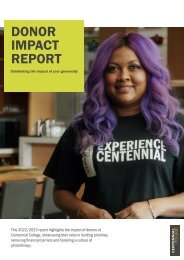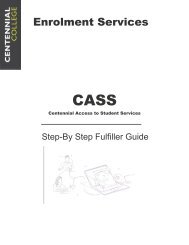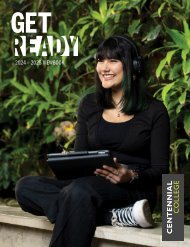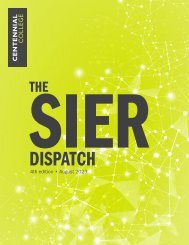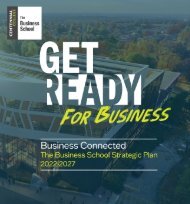The Teaching and Learning Innovation Digest - May 2023
Welcome to a truly special edition of the Teaching and Learning Innovation Digest! Our seventh annual academic publication has assumed an incredibly meaningful shape and form for a number of reasons. Not only did we receive an enthusiastic response with over 30 submissions via our institutional broadcast, but we also have consciously and intentionally embraced the principles of Universal Design for Learning by attempting to represent and celebrate the varied forms of expressions therein. From reflective essays, poetry, visual and performing arts, podcasts, video conversations to scholarly work, academic and applied research, news and updates, and interviews, this is truly a power-packed publication!
Welcome to a truly special edition of the Teaching and Learning Innovation Digest! Our seventh annual academic publication has assumed an incredibly meaningful shape and form for a number of reasons. Not only did we receive an enthusiastic response with over 30 submissions via our institutional broadcast, but we also have consciously and intentionally embraced the principles of Universal Design for Learning by attempting to represent and celebrate the varied forms of expressions therein. From reflective essays, poetry, visual and performing arts, podcasts, video conversations to scholarly work, academic and applied research, news and updates, and interviews, this is truly a power-packed publication!
You also want an ePaper? Increase the reach of your titles
YUMPU automatically turns print PDFs into web optimized ePapers that Google loves.
sexism, racism, homophobia, transphobia,<br />
colonialism, etc.) that continue to organize<br />
our societies <strong>and</strong> its institutions, including<br />
education. When structural factors are not<br />
taken into account, initiatives aimed at<br />
addressing mental health are left wanting <strong>and</strong><br />
benefit those who are already privileged by the<br />
system (Tremblay & Brunette, 2022).<br />
For example, the benefits of nature on<br />
mental health are well documented. Wang et<br />
al., (2022) research on the restorative<br />
nature of campus green spaces argues that<br />
envisioning post p<strong>and</strong>emic campus green<br />
space, university administrators should pay<br />
closer attention to students’ use of outdoor<br />
spaces. However, without consideration of<br />
how students’ social identities (i.e., race,<br />
class, gender, disability, etc…), <strong>and</strong> their<br />
intersections with structural issues (i.e.,<br />
poverty, racism, sexism, etc.), impact their<br />
use of green space, only those already<br />
privileged by the existing design of campus<br />
green spaces will garner the mental health<br />
<strong>and</strong> other benefits associated with it. This is<br />
especially troubling since research on mental<br />
health has found that cultural identity <strong>and</strong><br />
belonging to a marginalized minority group<br />
appears to be a factor associated with greater<br />
risk of mental health problems because these<br />
groups experience more socio-economic<br />
inequalities <strong>and</strong> discrimination (Srivastava &<br />
Srivastava, 2019).<br />
“<strong>The</strong> return to normal is too low a st<strong>and</strong>ard”<br />
<strong>The</strong> fact that our existing system of higher<br />
education exacerbates inequities must be<br />
considered not just in the matter of the return<br />
to campus but in the larger context of a return<br />
to a system of higher education that has<br />
privileged only a select few. Boettcher et al’s.,<br />
(2020) article on building new <strong>and</strong> better post<br />
p<strong>and</strong>emic support for Student Affairs graduate<br />
students reveal how academic programs create<br />
challenges for economically marginalized<br />
students For example, not only is there the<br />
financial burden of textbooks <strong>and</strong> academic<br />
fees, but also the financial loss incurred from<br />
unpaid but required practicum <strong>and</strong> internship<br />
hours. This results in students who need<br />
additional employment working multiple jobs,<br />
putting them at a disadvantage, with less time<br />
to devote to their studies or to be involved in<br />
activities that would build their professional<br />
capital <strong>and</strong> bolster their resume.<br />
Boettcher et al., (2020) exposed how the<br />
p<strong>and</strong>emic afforded opportunities to do things<br />
differently as a matter of necessity, which<br />
inadvertently reduced some of the existing<br />
inequities in the system. For example, the<br />
expenses associated with professional<br />
activities like conferences are often a barrier<br />
for students, contract faculty, <strong>and</strong> other<br />
economically marginalized groups. It is not<br />
just the fees associated with these events,<br />
but travel <strong>and</strong> other incidental costs (i.e. food,<br />
lodging, <strong>and</strong> childcare). <strong>The</strong> shift to online<br />
conferences lessened the financial burden<br />
associated with these events <strong>and</strong> opened up<br />
opportunities for those more economically<br />
marginalized groups to benefit from these<br />
events. Boettcher et al’s., (2020) central<br />
message is that returning “to normal” is too<br />
low a st<strong>and</strong>ard <strong>and</strong> that as institutions of<br />
higher learning transition to a post-p<strong>and</strong>emic<br />
environment there is an opportunity to “create<br />
transformative change to what is possible <strong>and</strong><br />
better in the future”.<br />
Conclusion<br />
<strong>The</strong> p<strong>and</strong>emic has presented new challenges<br />
for higher education, but it has also opened<br />
new avenues of possibilities. Particularly, for<br />
rethinking modes of delivery <strong>and</strong> possible<br />
transformations to postsecondary campuses<br />
(Ashour et al., 2021). As the l<strong>and</strong>scape of<br />
higher education continues to evolve, new<br />
planning <strong>and</strong> design perspectives look to reenvision<br />
university <strong>and</strong> college campuses, <strong>and</strong><br />
more broadly, higher education. <strong>The</strong>re seems<br />
to be a general consensus in the research<br />
literature that the postsecondary campus will<br />
not disappear with the growing presence of<br />
online learning. Instead, the shape <strong>and</strong> form<br />
campuses will take may be different from what<br />
most look like now. In his article, “Speculations<br />
on the post-p<strong>and</strong>emic university campus - a<br />
global inquiry” Deshmukh (2021) argues that<br />
“Forward-looking schools are reimagining<br />
campuses as a series of agile, multifunctional<br />
spaces with robust, scalable, flexible, techenabled<br />
infrastructure which include variation<br />
in occupancy <strong>and</strong> rules of habitation, based on<br />
public health <strong>and</strong> big-weather events.”<br />
<strong>The</strong> p<strong>and</strong>emic serves as a watershed moment<br />
having exposed many of the cracks with the<br />
existing education system. <strong>The</strong> possibilities<br />
of more inclusive <strong>and</strong> equitable campuses<br />
<strong>and</strong> systems of higher education would<br />
mean taking into account the diversity of its<br />
users <strong>and</strong> centring the voices, experiences,<br />
<strong>and</strong> lived realities of those who have been<br />
historically marginalized from these sites<br />
of higher learning (Blaskovits et al., <strong>2023</strong>,<br />
Stack, 2021). For example, Blaskovits (<strong>2023</strong>)<br />
contends that pre-existing gaps in academic<br />
achievement between Indigenous <strong>and</strong> non-<br />
Indigenous students may widen if specific<br />
attention is not paid to the differential impacts<br />
of the p<strong>and</strong>emic.<br />
Without structural changes to higher education<br />
that starts from the margins, with those who<br />
are often invisible when it comes to who <strong>and</strong><br />
what counts at institutions of higher learning,<br />
the possibilities for transforming higher<br />
education will simply amplify an already<br />
inequitable system.<br />
22<br />
23


